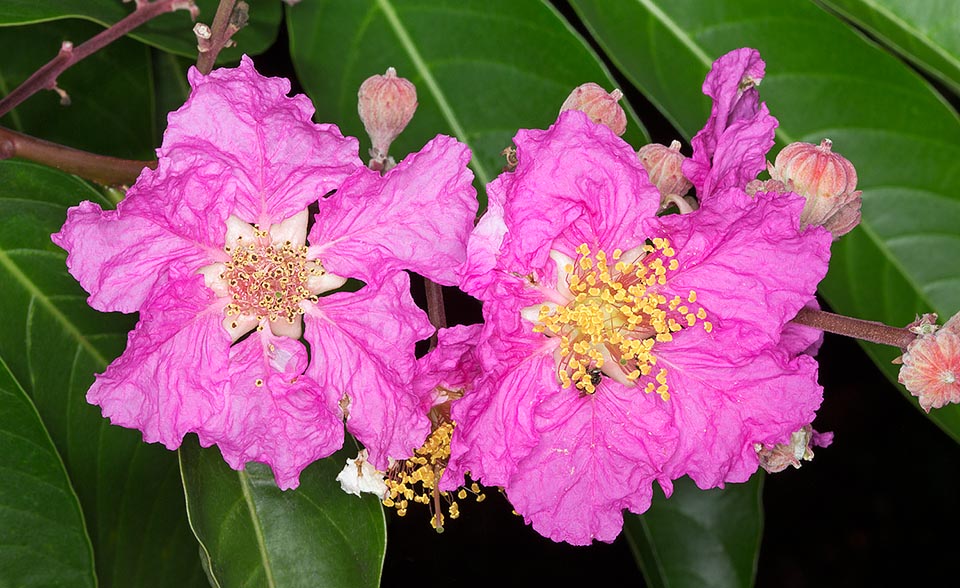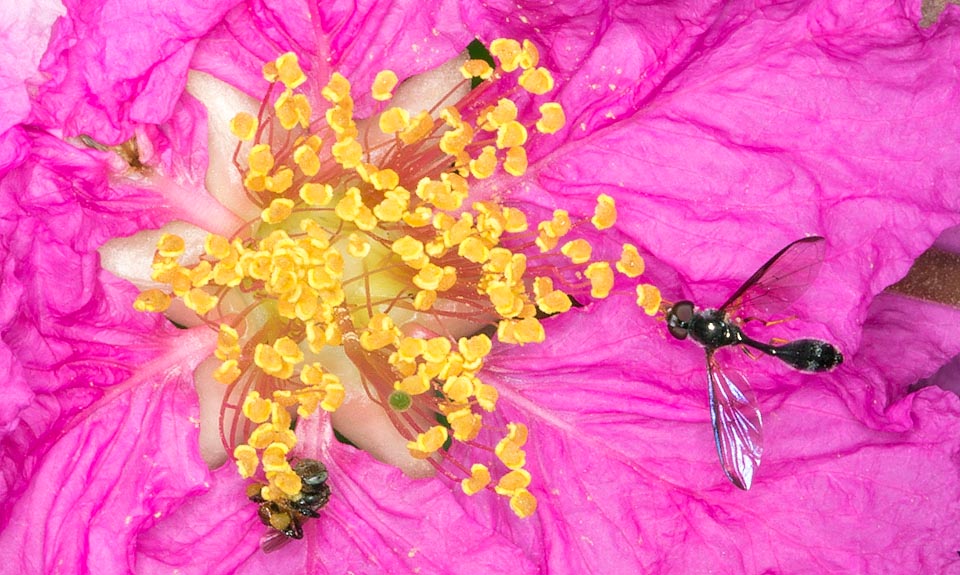Family : Lythraceae

Text © Pietro Puccio

English translation by Mario Beltramini
The species is native to Cambodia, India, Indonesia, Malaysia, Myanmar, Philippines, Sri Lanka, Thailand and Vietnam where it grows in the humid forests, often in swampy grounds and close to river streams, up to about 500 of altidude.
The genus was honoured by Linnaeus to his friend Magnus Lagerström (1691-1759) who was director of the Swedish East India Company; the specific name is the Latin adjective “speciosus, a, um” = beautiful, with obvious reference.
Common names: crepe flower, giant crape myrtle, pride-of-India, queen’s crape-myrtle, queen’s-flower, rose of India (English); resedá-flor-da-rainha, resedá-gigante (Brazil); banaba, makablos, parasabukong (Philippines); ketangi (Java); ajakari, arjuna, challa, chennangi, holedasal, jarul, karaca, motabondara, nandi, tamhan, varagogu (India); bungur (Indonesia); berangan asu, bongor biru, bongor raya, sebugor (Malaysia); gawkng-uchyamang, pyinma (Myanmar); chuang muu, tabaek dam (Thailand); banglang (Vietnam).

The Lagerstoremia speciosa is a tree reaching the 20 of height with 60 cm of diameter in the humid South-East Asian forests © Giuseppe Mazza
Terminal panicle inflorescences, erect, 15-40 cm long, carrying numerous flowers, on a 1-1,5 cm long pedicel, of colour varying from pale pink, to lavender, to purple pink, of 5-8 cm of diameter, lasting 2-3 days. Campanulate calyx, striped longitudinally, with 6(-9) green lobes and covered externally by a light greyish or ferruginous tomentum, persistent in fruit. Corolla with 6(-7) unguiculate petals (petals with long narrow base similar to a stem) orbicular with wavy margins, 1,5-3,5 cm long and 1-2 cm broad, and a multitude of stamina with yellow anthers. The fruit is a globose capsule, woody, 2-2,5 cm long and broad, initially green, then blackish when ripe, containing several winged seeds, about 1 cm long, of pale brown colour.

The 15-40 cm terminal inflorescences have numerous flowers of 5-8 cm of diameter. The variable colour can be pale pink, lavender or purple pink © Giuseppe Mazza
Species of huge ornamental and landscaping value, cultivable in the tropical and humid subtropical climate zones and marginally in the milder temperate-warm ones where temperatures around the 0 °C are short lasting exceptions. Utilizable as isolated specimen, in group and as roads tree, requires an exposition in full sun and is not particular about the soil, from slightly acidic to slightly alkaline, preferably draining and maintained constantly humid, but grows also in the little draining ones, bears the water stagnations, and well rooted, may bear even short drought periods. Useful are the fertilizations with slow-releasing products balanced with microelements to prevent chlorosis phenomena. It is also employed in the reforestation of degraded areas and for controlling the erosion, thanks to its ample and dense rooting apparatus.

Various insects like these Syrphidae take care of pollen transportation. Apart from the ornamental value, is a species with bioactive principles good for treating diabetes © Giuseppe Mazza
The tree is the floral emblem of Maharashtra state of central-western India.
Synonyms: Munchausia speciosa L. (1770); Lagerstroemia major Retz. (1779); Lagerstroemia munchausia Willd. (1779); Adambea glabra Lam. (1783); Adambea hirsuta Lam. (1783); Lagerstroemia flos-reginae Retz. (1788); Lagerstroemia reginae Roxb. (1796); Lagerstroemia hirsuta (Lam.) Willd. (1799); Lagerstroemia plicifolia Stokes (1812); Lagerstroemia augusta Wall. (1829); Lagerstroemia macrocarpa Wall. (1829); Murtughas hirsuta (Lam.) Kuntze (1891).
→ To appreciate the biodiversity within LYTHRACEAE family please click here.
